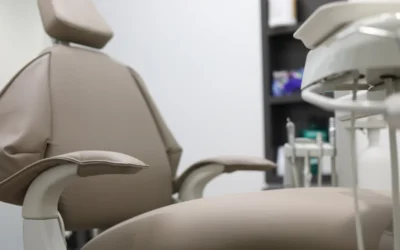Cavities are a common dental problem that affects millions of people worldwide. Despite their prevalence, many individuals tend to overlook or delay treatment for cavities, often due to various reasons such as fear, cost, or simply a lack of awareness. However, it is essential to understand the potential consequences of leaving a cavity untreated and to take the necessary steps to prevent and treat them.
In this blog post, we will delve into the question of how long a cavity can go untreated and explore the progression of untreated cavities. We will also discuss the symptoms that may arise as a cavity worsens and the potential consequences that can result from neglecting treatment. Finally, we will provide valuable insights into cavity prevention and the available treatment options.
So, if you have been wondering just how long a cavity can be left untreated without repercussions, or if you are seeking guidance on maintaining optimal oral health, then this blog post is for you. Let’s dive in and gain a comprehensive understanding of cavities and the importance of timely intervention.
Understanding Cavities: Causes and Effects
Cavities, also known as dental caries or tooth decay, are the result of a complex process involving various factors. Understanding the causes and effects of cavities is crucial in comprehending the need for prompt treatment.
Causes of Cavities
- Poor Oral Hygiene: Inadequate brushing and flossing allow bacteria to accumulate on the teeth, leading to the formation of plaque. Over time, this plaque can erode the protective enamel layer and cause cavities.
- Dietary Factors: Consuming excessive sugary foods and beverages, especially those high in carbohydrates, contributes to cavity formation. The bacteria in the mouth feed on these sugars and produce acids that attack the teeth.
- Dry Mouth: A lack of saliva can increase the risk of cavities as saliva helps wash away food particles and neutralize acids, providing a natural defense against tooth decay.
- Genetics: Some individuals may have genetic predispositions that make them more susceptible to cavities. Factors such as tooth enamel thickness and saliva composition can influence cavity formation.
- Existing Dental Work: Dental restorations that have become worn, cracked, or have gaps can create areas where bacteria can accumulate and lead to cavity development.
Effects of Cavities
Cavities can have a range of effects on oral health, and if left untreated, these effects can worsen over time. Some key effects of cavities include:
- Tooth Sensitivity: As a cavity progresses, it can cause increased tooth sensitivity to hot, cold, or sweet stimuli. This sensitivity occurs due to the erosion of the protective enamel layer, exposing the underlying dentin.
- Toothache: As the cavity extends deeper into the tooth, it can reach the nerve endings, resulting in persistent toothache. This pain can range from mild discomfort to severe throbbing pain.
- Structural Damage: Untreated cavities can lead to the destruction of tooth structure. This can manifest as visible holes or pits in the affected teeth, compromising their integrity and aesthetics.
- Infection and Abscess: As the cavity progresses, bacteria can penetrate deeper into the tooth, reaching the pulp chamber. This can cause a painful infection and the formation of an abscess, which is a pocket of pus.
Understanding the causes and effects of cavities provides valuable insight into the importance of addressing them promptly. By recognizing the risk factors and taking appropriate preventive measures, individuals can minimize the likelihood of developing cavities and the associated complications.
The Progression of Untreated Cavities
Cavities don’t appear overnight and can progress through various stages if left untreated. Understanding the progression of untreated cavities is essential in realizing the urgency of seeking dental care. Let’s explore the different stages that cavities can go through:
Initial Stage: Tooth Decay
At the initial stage, the cavity begins as a small area of demineralization on the tooth surface. This demineralization occurs when acids produced by bacteria in dental plaque attack the enamel, causing it to lose minerals. Initially, the cavity may be painless and may not exhibit any noticeable symptoms. However, if left untreated, the decay can progress further.
Second Stage: Enamel Erosion
As the cavity progresses, the demineralization of the enamel continues, leading to the erosion of the tooth’s outer layer. At this stage, the cavity may start to become visible as a white or brown spot on the tooth’s surface. The affected area may also feel rough or slightly depressed. While enamel erosion is irreversible, prompt intervention at this stage can prevent further damage.
Third Stage: Dentin Decay
If the cavity remains untreated, it can penetrate through the eroded enamel and reach the dentin layer of the tooth. Dentin is softer and more vulnerable to decay compared to enamel. As the bacteria reach the dentin, the decay process accelerates. The affected tooth may become more sensitive to temperature changes and sweet or acidic foods. The cavity may cause discomfort or mild pain at this stage.
Final Stage: Pulp Infection
If the decay reaches the innermost layer of the tooth, known as the pulp, it can lead to a severe infection. The pulp contains blood vessels, nerves, and connective tissues. Once the infection reaches this stage, the individual may experience intense pain, especially when biting or applying pressure to the affected tooth. The infection can also cause swelling, abscess formation, and a foul taste or odor in the mouth.
Understanding the progression of untreated cavities highlights the importance of early detection and intervention. It is crucial to seek dental care as soon as possible to prevent the cavity from advancing to more severe stages and causing potential complications. Regular dental check-ups and maintaining good oral hygiene practices can help identify cavities in their early stages and prevent them from progressing further.
Symptoms of Untreated Cavities
Recognizing the symptoms of untreated cavities is vital for timely intervention and preventing further dental complications. Here are some common symptoms that may indicate the presence of an untreated cavity:
Toothache and Sensitivity
One of the primary symptoms of an untreated cavity is toothache. Initially, the pain may be mild or intermittent, but it can intensify as the cavity progresses. The toothache may be triggered by chewing, eating hot or cold foods, or consuming sugary substances. The affected tooth may also become sensitive to temperature changes, causing discomfort or pain when exposed to hot or cold stimuli.
Sharp Pain When Eating or Drinking
As a cavity worsens and reaches deeper layers of the tooth, it can cause sharp pain when eating or drinking. This pain occurs due to the exposure of the tooth’s nerves to external stimuli. Biting down on the affected tooth or consuming foods and beverages that exert pressure on the cavity can elicit this sharp pain.
Visible Holes or Pits in Teeth
Untreated cavities can result in visible holes or pits in the affected teeth. These cavities can create a distinct appearance, and they may be visible to the naked eye or detected during a dental examination. The presence of visible cavities indicates that the decay has progressed significantly and requires immediate attention.
Pus or Discharge around a Tooth
In advanced stages of untreated cavities, an infection may develop, leading to the formation of an abscess. An abscess is a pocket of pus that forms at the root of the tooth. It can cause swelling, redness, and tenderness around the affected tooth. In some cases, the abscess may rupture, resulting in a foul taste or odor in the mouth.
Recognizing these symptoms is crucial in seeking prompt dental care. If you experience any of these signs, it is essential to schedule an appointment with a dentist to evaluate the extent of the cavity and determine the appropriate treatment plan. Ignoring these symptoms can lead to further complications and potentially result in the loss of the affected tooth.
Potential Consequences of Untreated Cavities
Neglecting treatment for cavities can have significant consequences for both oral health and overall well-being. Understanding the potential risks associated with untreated cavities emphasizes the importance of seeking timely dental care. Here are some of the potential consequences that can arise from leaving a cavity untreated:
Tooth Abscess
If a cavity progresses to the point where it reaches the pulp of the tooth, it can lead to a dental abscess. An abscess is a painful infection that forms at the root of the tooth. It is characterized by swelling, redness, and the presence of pus. If left untreated, the infection can spread to the surrounding tissues, causing severe pain and potentially requiring more extensive dental procedures to resolve.
Gum Disease
Untreated cavities can also contribute to the development of gum disease, also known as periodontal disease. The bacteria from the cavity can spread to the gums, leading to inflammation and infection. Gum disease can cause symptoms such as gum redness, swelling, bleeding, and bad breath. If left untreated, it can progress to more advanced stages, potentially resulting in gum recession, tooth loss, and even systemic health issues.
Tooth Loss
The longer a cavity remains untreated, the higher the risk of tooth loss. As the decay continues to progress, it can weaken the tooth structure, compromising its stability. In advanced stages, the tooth may become so damaged that it cannot be saved and may require extraction. Tooth loss can have a significant impact on oral function, aesthetics, and overall quality of life.
Wider Health Risks
Neglected cavities can have implications beyond oral health. Research suggests a potential link between untreated cavities and systemic health conditions. Bacteria from the mouth, including those associated with cavities, can enter the bloodstream and contribute to the development of various health issues. These may include cardiovascular disease, respiratory infections, diabetes complications, and adverse pregnancy outcomes.
Understanding the potential consequences of untreated cavities underscores the importance of seeking early intervention. Regular dental check-ups, practicing good oral hygiene, and addressing cavities promptly can help prevent these complications and promote overall oral and systemic health. Remember, prevention and timely treatment are key to maintaining optimal oral well-being.
Prevention and Treatment of Cavities
Prevention and treatment are essential aspects of managing cavities effectively. By implementing preventive measures and seeking appropriate treatment, individuals can minimize the risk of cavities and maintain optimal oral health. Here are some key strategies for cavity prevention and treatment:
Regular Dental Check-ups
Regular dental check-ups play a crucial role in cavity prevention and early detection. Dentists can identify early signs of cavities and provide necessary interventions to prevent them from progressing. Routine cleanings and examinations help remove plaque and tartar buildup, reducing the risk of cavities. Dentists may also perform dental X-rays to detect cavities that may not be visible to the naked eye.
Healthy Diet and Oral Hygiene
Practicing good oral hygiene and adopting a healthy diet are fundamental in cavity prevention. Brushing teeth at least twice a day with fluoride toothpaste helps remove plaque and strengthen tooth enamel. Flossing daily helps clean between teeth and along the gumline, where cavities commonly develop. Limiting sugary and acidic foods and beverages, including sodas and candies, can significantly reduce the risk of cavity formation.
Filling, Root Canal, or Extraction
When cavities are detected, prompt treatment is necessary to prevent further damage. The treatment options for cavities depend on the severity and extent of decay. In the early stages, a dental filling may be sufficient to restore the affected tooth. If the decay has reached the pulp, a root canal procedure may be required to remove the infected tissue and save the tooth. In cases where the tooth is extensively damaged, extraction may be necessary, followed by replacement options such as dental implants or bridges.
Fluoride Treatments
Fluoride treatments can be beneficial in preventing and slowing down the progression of early cavities. Fluoride is a mineral that helps strengthen tooth enamel, making it more resistant to acid attacks from bacteria. Dentists may apply fluoride varnish or recommend fluoride mouth rinses or toothpaste for at-home use.
By implementing these preventive measures and seeking appropriate treatment, individuals can effectively manage cavities and minimize their impact on oral health. It is crucial to maintain regular dental visits, practice good oral hygiene, follow a healthy diet, and address cavities promptly to ensure a healthy and cavity-free smile. Remember, prevention is key to long-term oral health.





0 Comments